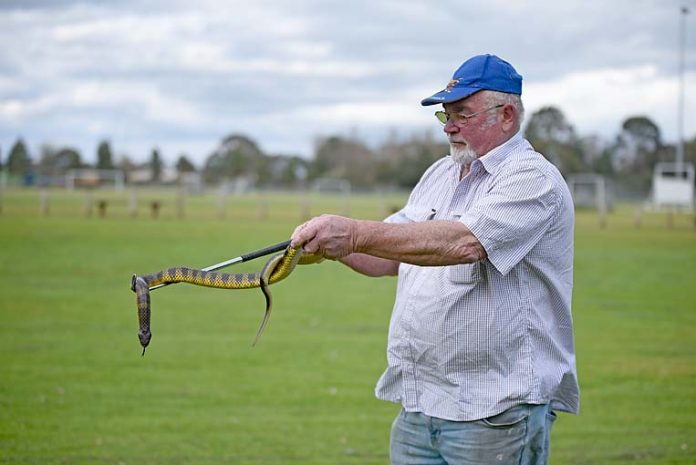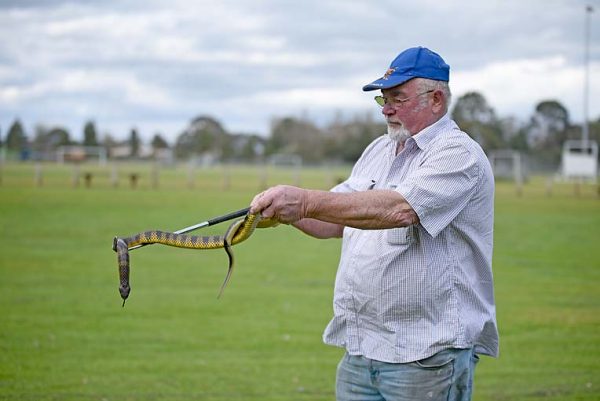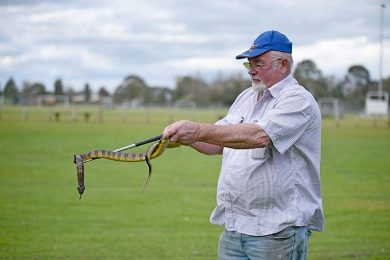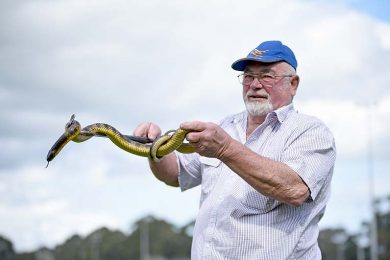

WATCH out, snake season has arrived.
This is the message from Mount Gambier veteran snake catcher David Miles and Department for Environment and Water given the looming warmer conditions.
While a cold front is sweeping the region, Mr Miles warns snakes will begin to move in coming weeks.
He predicted there would be greater sightings in the region given the good conditions for snake breeding.
Although he had yet to get a call-out this season, Mr Miles said a woman found a juvenile brown snake in her child’s bedroom in Bordertown this week.
“The Limestone Coast has some of the world’s most deadliest snakes,” the licensed snake catcher warned yesterday.
“Brown snakes tend to stay slightly out of Mount Gambier in the higher drier stony country around the Caveton through to Cafpirco Road and Wandilo,” Mr Miles explained.
“They very rarely come into the city because the country does not suit them.”
In Mount Gambier, he said lowland copperheads were found nestled around the crater lakes area.
“We also get reasonable amount of tiger snakes down through the drains in the city and occasionally snakes that come in on a car,” Mr Miles said.
He also warned Blue Lake Sports Park was also a hotspot for snakes, particularly behind the baseball area.
“Snakes can be found anywhere in and around Mount Gambier – just keep your eyes open.”
He predicted residents would start spotting snakes within three to four weeks, depending on the weather.
Mr Miles said the eastern brown snake found in the region was a “nasty little” reptile.
He also urged people to be vigilant with their pets in regards to the danger posed by snakes.
“People just have to be mindful that we live in the country they have lived in for a lot longer than we have,” Mr Miles said.
He revealed it was technically illegal for people to kill snakes.
“Most people who get bitten by snakes are either trying to kill them or provoking them in some way,” Mr Miles said.
“Leave them alone or get someone qualified to come and remove them.”
During the warmer months snakes become active out of brumation (a hibernation-like state), looking to breed and source food.
Department for Environment and Water spokesperson Dr Deb Kelly said there were snakes all over South Australia,
“Eastern brown snakes are found everywhere, but each region has its local speciality – and most are venomous,” Dr Kelly said.
“Adelaide Hills has the red-bellied black snake, the River Murray and South East has the tiger snake, Eyre and Yorke peninsulas, especially near the coast, are known places for death adders, with Kangaroo Island having copperheads and mulga snakes up north.
“Just because you have never seen a snake on your property does not mean they are not there, so you should always be careful about putting your hands or feet into spots you cannot see, like long grass or that pile of junk behind the shed.”
You can avoid snakes on your property by keeping your yard clear of long grass and removing rubbish so snakes have nowhere to hide.
Dr Kelly said snakes were generally shy and would not attack unless provoked, so if you spotted one it was best to leave them be.
Snakes are protected native animals and they have an important part to play in the ecosystem, especially in helping to control rats and mice.
If a person is bitten, call triple zero.
Wrap a pressure bandage tightly over the area of the bite, then use a second bandage and splints to immobilise the limb.
Keep the person calm and still until you can get medical help.










